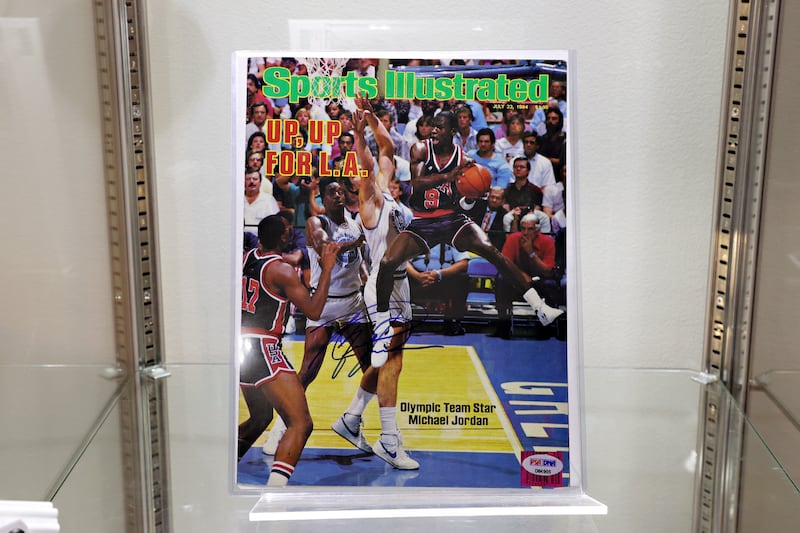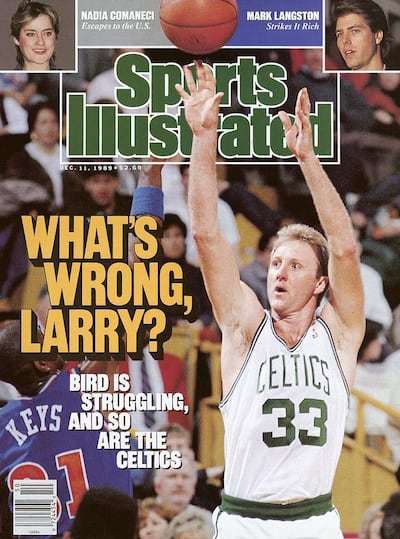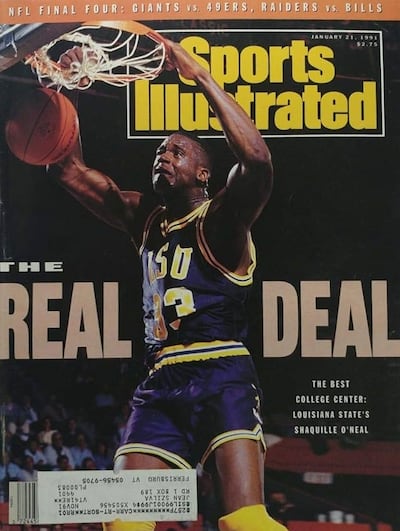A decade has passed since talk turned in my college freshman class to how students might improve their own writing by reading more. I suggested they pick up magazines in the Penn Station newsagents when catching the train out from the city to the campus and threw out recommendations like Rolling Stone, Time and The Source. They stared back at me. Genuinely perplexed. Almost intrigued. The idea of paying several dollars for a thick mound of coloured paper on any subject was completely alien to these 18- and 19-year-olds. They had never imagined anything so preposterous. I might as well have asked them to take notes with ink and quill rather than MacBook.
In a related story, Sports Illustrated laid off just about all its staff the other day, pulling the plug on a sick patient lingering on a demeaning life-support for the last several years. Most recently the magazine made national headlines when it was discovered editors created a stable of fake writers, replete with faux headshots, to crank out stories generated by artificial intelligence (AI). A stark demonstration of how far the title had fallen. Once upon a time three million Americans used to get it delivered to their houses each week, and could recite its litany of marquee journalists like some weird literary rosary. Deford, Jenkins, Smith, Nack, Telander and Reilly, masters of the long-form art.

Bizarrely, news of nearly 100 people losing their jobs was greeted joyously by many on the right wing, a demographic which categorised this failure as one more triumphant example of a business that went “woke” deserving to go broke. The magazine’s crime had been to put transgender models on recent covers of its money-spinning and hopelessly anachronistic annual swimsuit edition. More sober minds blamed the demise on Sports Illustrated ending up in the hands of investors who bought a legacy brand that they didn’t quite know what to do with. Gougers always know the price of everything and the value of nothing.
The simplest and most cogent explanation is we are now into the second generation of people who have come of age without knowing the tactile pleasure of unfurling the glossy pages of a beautifully produced, well-written magazine. That luxuriant ritual is a relic from a bygone era, a leisure activity rendered utterly obsolete by technology, a cultural tic about as relevant to their lives as watching Pathe newsreel footage before a movie in the cinema was to ours.
READ MORE



That much was underlined when an older couple on our street, cleaning house before selling up, offered me a couple of giant boxes of their sons’ Sports Illustrated collection. Dating from the 1980s and early 1990s, a golden age for the publication, and in pristine condition, nobody else wanted them. I did not grow up collecting this magazine from the mailbox like so many Americans, but I first started subscribing to it when living in Dún Laoghaire in the mid-90s and I knew how great it had been in its pomp.
To me these were treasured keepsakes deserving of a new home and, as curator of my own sprawling archive (fancy name for piles of unkempt sports paraphernalia hoarded over decades), I was grateful for this significant donation. In saving these precious objects from the horror of the recycling bin I was confident I had committed a vital act of preservation for future generations. And so, amazingly, it proved.
Some weeks back, Finn, my 13-year-old basketball obsessive son, asked me to open the vault, or carry the boxes up from the basement at least, so he could flick through some of these strange and wonderful artefacts. A typical 21st century teen, iPhone and Air pods seemingly surgically attached to his body, he got down on the livingroom floor, like some sort of sporting archaeologist, frantically leafing pages, questing for NBA gold. Soon the rug was papered over with musty-scented covers like “What’s wrong Larry?”, showing a troubled Larry Bird, “Raging Bull”, capturing an open-mouthed Michael Jordan in the act of shooting, and “The Real Deal”, featuring freshman college behemoth Shaquille O’Neal.
Even after he learned that the rather uptight owner of these curios wouldn’t allow items to be cut out and stuck on his bedroom walls, the kid still savoured the thrill of each fresh discovery. Witness the sustained oohing and aahing when he unearthed the once-off 1991 Sportsman of the Year edition, featuring an innovative hologram of Jordan on the cover. A collector’s item in the online auction world, apparently.
An inveterate sneakerhead, he forensically inspected every action photograph so he could identify the “vintage” shoes the players wore, then he sniggered at how many cigarette and beer ads were sprinkled throughout. The magazine’s editorial budget, the stuff of media legend, was always underpinned by rivers of money flowing in from tobacco and booze companies.
In the end Finn purloined a dozen editions of the mag for himself, carefully housing them inside a shoebox, and taking them upstairs to his own room for safekeeping. There’s no doubt he appreciated there was something unique, exceptional and worth cherishing about these slivers of history. Of course, at no stage in the process did he stop to read any of the excellent articles accompanying the wondrous pictures and memorable covers he found so enthralling. In a different time he would have been perfect fodder for Sports Illustrated. A different time. That has passed.
















